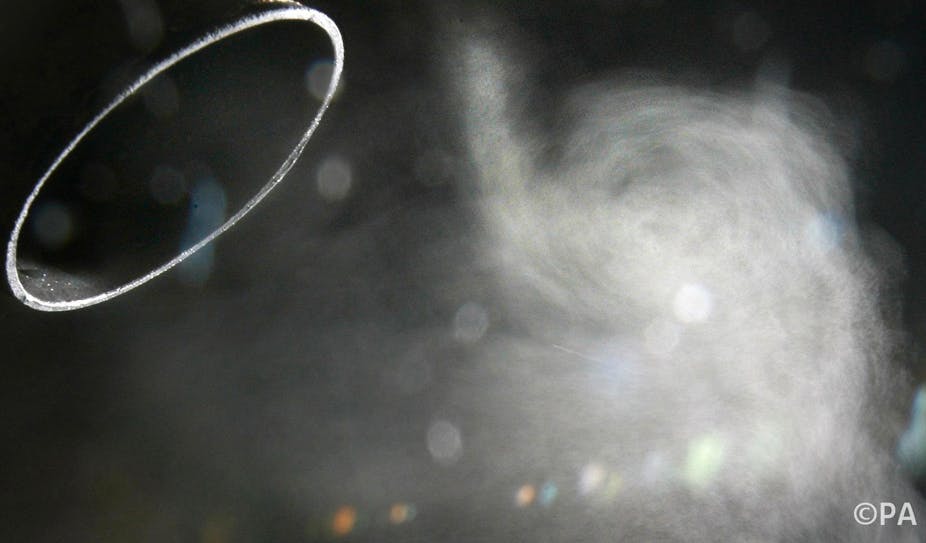Hearing the words “airborne nanoparticles” for the first time, one would probably ask: just how tiny are they, where do they come from, and do we need to worry about them?
These tiny particles between 1 and 100nm are around 700 to 70,000 times thinner than the diameter of typical human hair. Nanoparticles are ubiquitous in the atmosphere. One of their key characteristics is that they possess very little mass, but are many in number. And it is for this reason that the current worldwide, mass–based, ambient air quality regulations for particulate matter are ineffective in dealing with nanoparticle concentrations in cities.
Where do they come from?
Nanoparticles enter the environment from a variety of sources that include natural, incidental and manufactured processes. Road vehicles are the main culprit, contributing up to 90% of the total in polluted environments such as busy roads. Consequently the air in such environments contain tens of thousands of these particles. City dwellers will generally inhale around 10-80 billion nanoparticles every hour on busy routes.

The Euro 5 and Euro 6 emission standards are the first ever for diesel vehicles that restrict the emissions of particle numbers in the European Union. Reduction of sulphur content in diesel fuel has brought down nanoparticle levels in European cities, as has wider use of diesel particulate filters. Such measures are likely to reduce the amount of nanoparticles from road vehicles, but the contribution from non-vehicle sources, such as wood and coal burning, may become more pronounced in future.
What are the effects?
Nanoparticles have favourable impact on global climate as opposed to human health. Unlike their larger sized soot particles (black carbon), nanoparticles can be activated as cloud droplets. High concentrations of these droplets increase the proportion of solar radiation reflected back to space, causing a cooling effect on climate.
The human body is an excellent medic for itself. The lungs exhale a good proportion of micron-sized particles (1,000 times bigger than nanoparticles), and can expel a certain quantity of nanoparticles too. But long exposures to high concentrations of nanoparticles brings a number of adverse health effects such as lung problems, and cardiovascular disease.
One of the key reasons for their negative health impact is their toxicity and large total surface area per unit mass, compared with micron size particles. For example, if we take one gram mass of a material to make spherical particles of 1µm and 1nm diameter. The surface area of 1nm particles will be about 1000 times higher than those of 1µm particle. This increases their potential chemical reactivity and ability to be absorbed. They can pass deep into the respiratory system, reacting with the lung tissues and potentially entering the blood stream. This is not an issue with particles of a larger, micrometre size, which cannot pass through cell membranes.
How are we dealing with them?
There are currently no air quality regulations in any part of the world to control exposure to nanoparticles, for numerous reasons. For instance, what the safe level of nanoparticle exposure might be is still contentious. There is also a lack of standard measurement techniques or instruments.
Another technical challenge to complicate any future regulation is our insufficient knowledge of the physical and chemical characteristics of nanoparticles from new sources, for example those produced by vehicles run on bio-fuels. While the use of biofuels in road vehicles has been found to reduce emissions of carbon emissions and the mass of particulates, evidence suggests an increase in the number of particle emissions.
Knowledge on the toxicological character of nanoparticles from biofuels is limited. There are substantial efforts to control public exposure through regulating air quality. The science surrounding their behaviour, measurement, dispersion, health and environmental impact has improved appreciably over the past decade. With the notable recent advancement of measuring instruments it is now possible to measure atmospheric particles down to 1nm. But there are still number of technical hurdles to be crossed before any nationwide regulatory framework can be put into practice.

